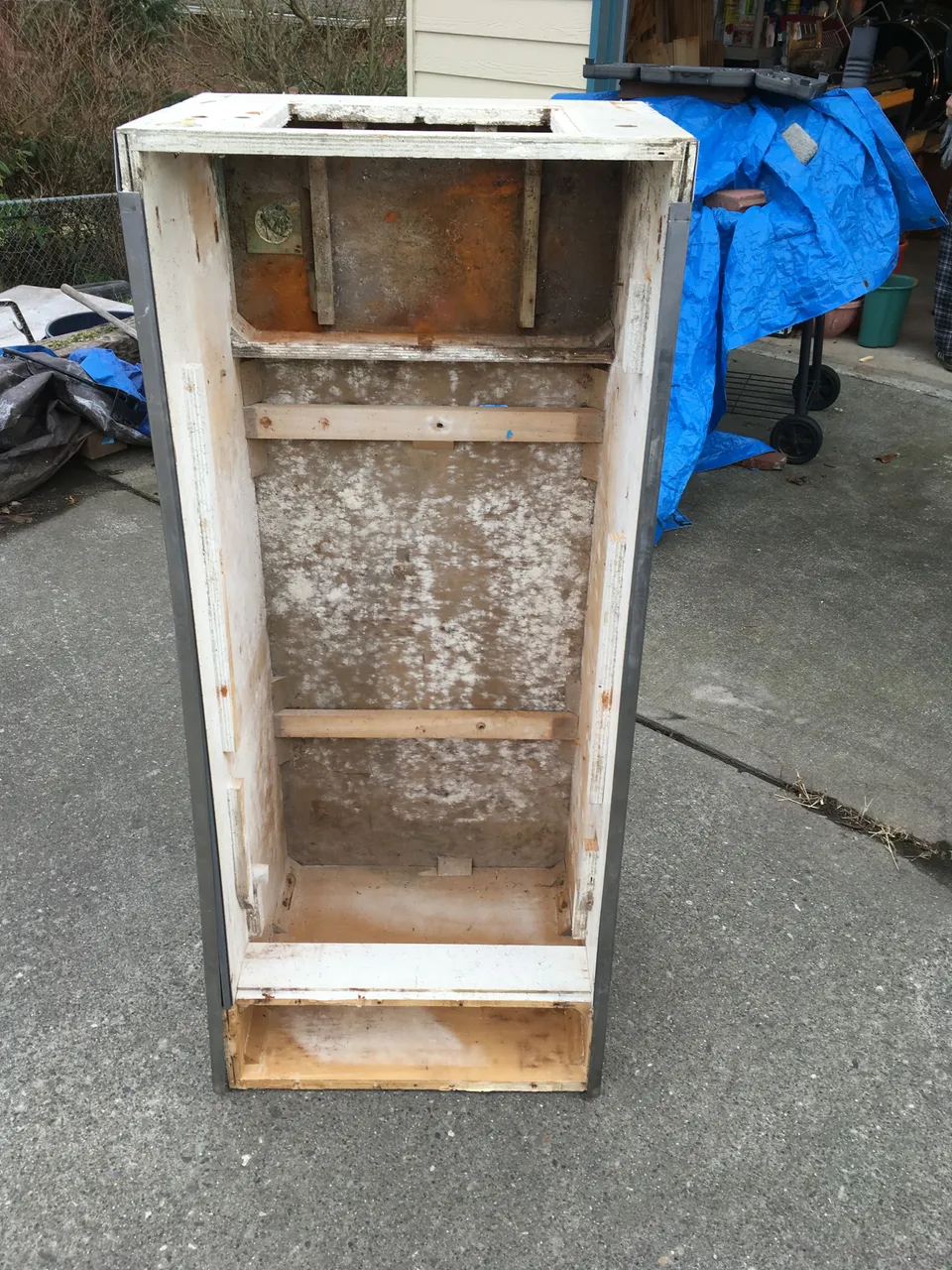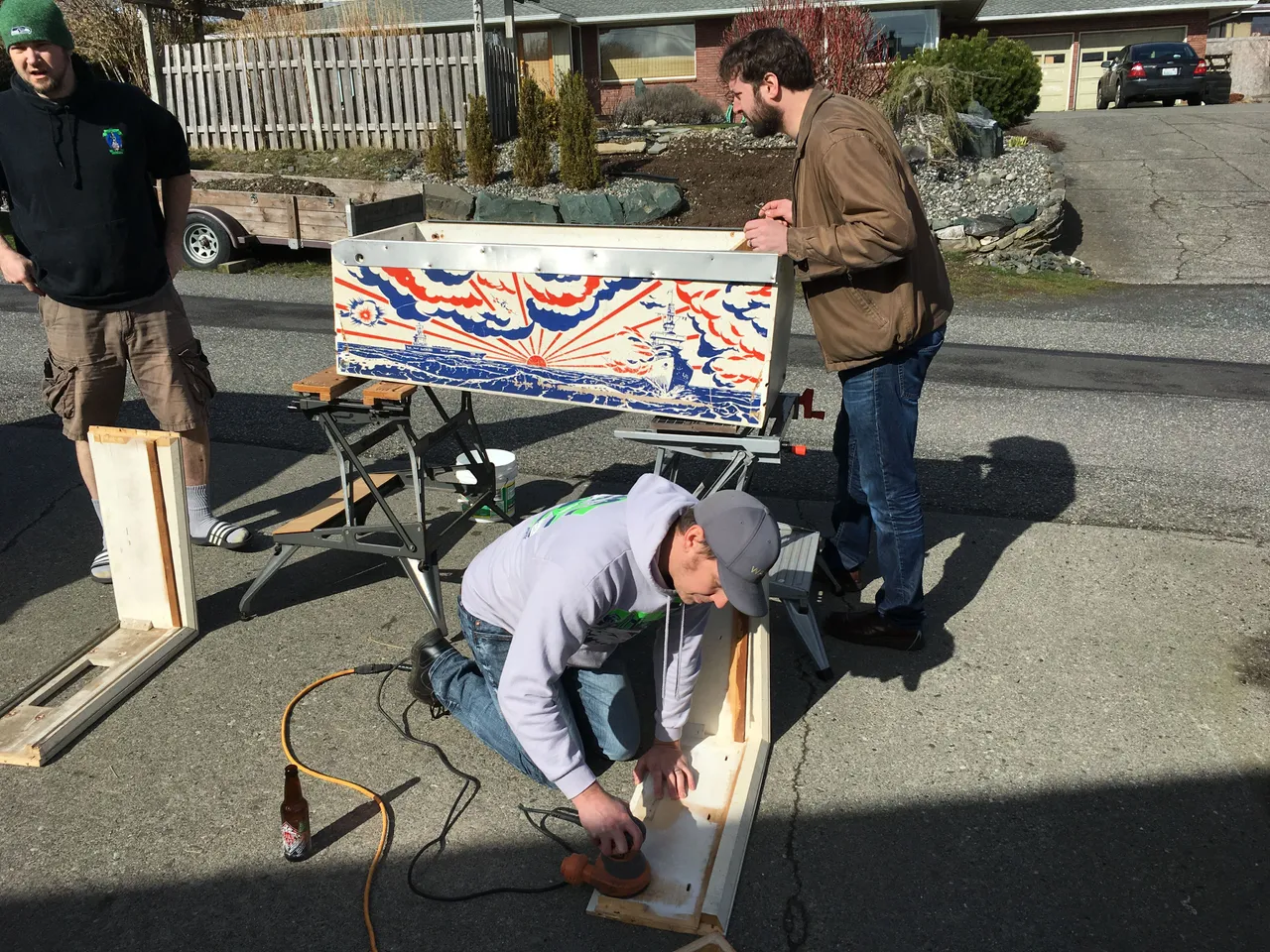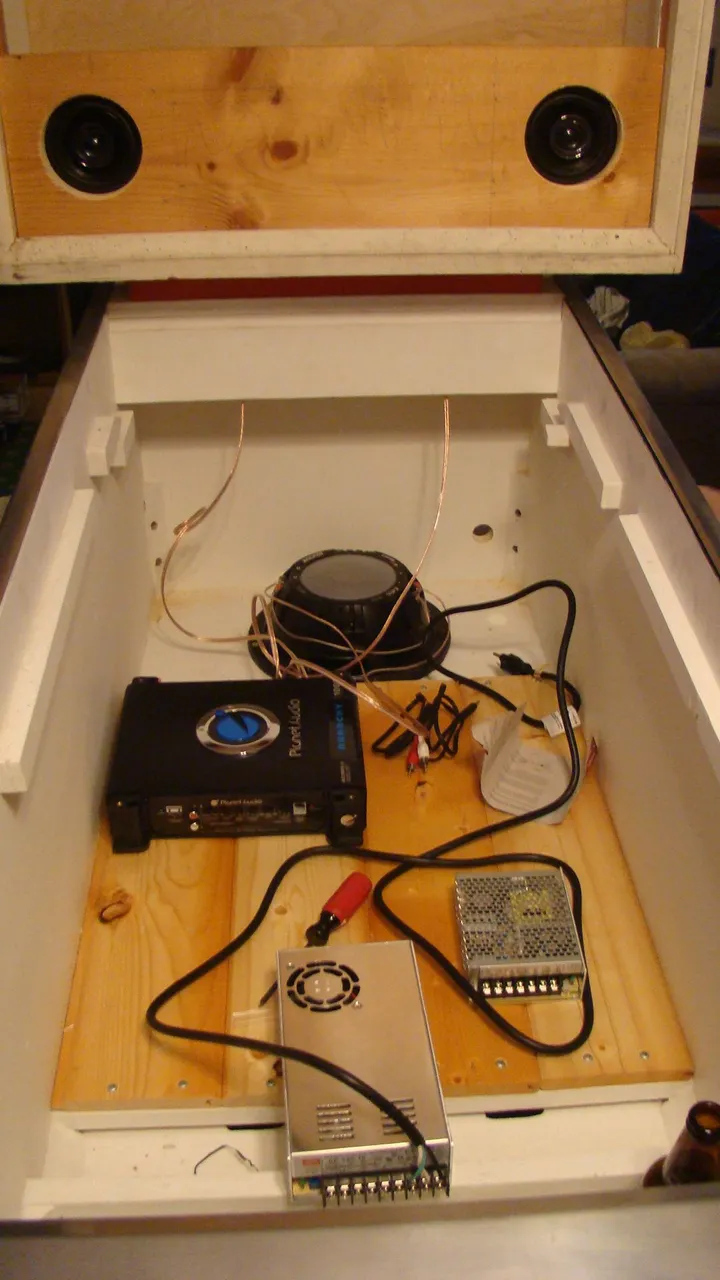For the last 5 months, my friends and I have been working on bringing a 70's pinball machine back from the grave. Josiah picked up the carcass from a guy in southern Washington and was not planning on doing anything more with it beyond cleaning it up and using it for an art piece.

Clearly, it was not in the best shape. In fact, the cabinet sat in his garage for a couple years. In February though, we came up with the, no doubt ambitious idea, of not only cleaning it up, but also getting the machine back into a playable state. You're welcome to hear us babbling about it on the Pinball Plaid Podcast. A couple weeks into March, and we were having sanding parties (yes, these are not the most fun parties).

While the cabinet was in cleanup mode, I was also knee deep in the docs for MPF (the Mission Pinball Framework). The framework is written in Python and allows users to configure a lot of common pinball logic from a standard YAML file. Before we had a single component installed in the cabinet, we already had a pretty sick attract show thrown together in the virtual environment. With the had cabinet clean, we put down a layer of primer inside of it to protect the wood and Steve decided to go crazy. He bought a 1000watt amp and 2.1 speaker setup to handle the audio. We wired it up to some generic power supplies just for kicks...

We used some instructions from a post on Pinside to create our own Pinball Rotisserie. Soon after, Josiah and Steve were double-teaming the component installation. I was spending more time over there at that point, but there's only so much that can be done at once. Those guys owned this part of the build, and over the course of about a week, it began to look like this:

This post is continued in part 2/2.